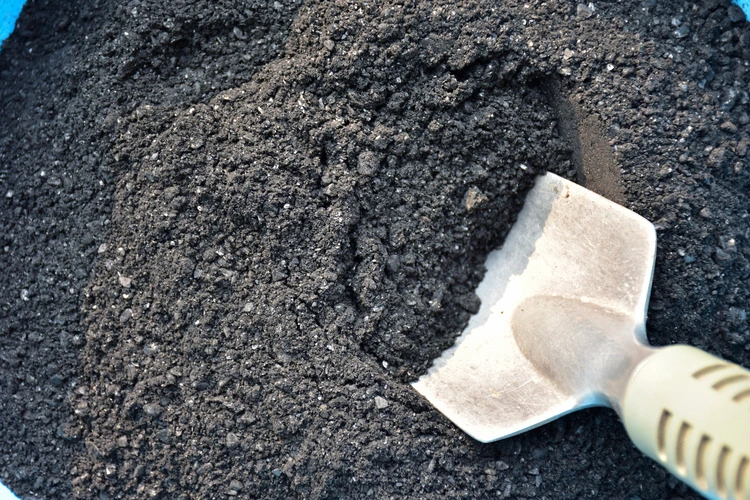

Indigenous Amazonians pioneered biochar centuries ago, and some still practise it. British farmers are now turning to the same method to tackle today’s climate crisis

By Robin Hanbury-Tenison
What do a small farm in Cornwall and the Amazon rainforest have in common? A neighbour of mine has started marketing biochar from his family farm. This rich fertiliser, made from agricultural waste, also happens to be one of the best ways of removing carbon dioxide from the atmosphere. A very similar material, known as terra preta or black earth, has long been found in vast layers throughout the Amazon.
Once thought natural, it now appears man- made. Recent research links it to lost cities, revealed through laser technology, that flourished in an otherwise inhospitable environment by creating highly fertile soil through the addition of organic matter and other materials to the otherwise infertile and shallow soil below the trees.
Biochar is made in much the same way as charcoal, by heating biomass through pyrolysis – heating without oxygen. The difference is that charcoal is used as fuel, while biochar acts as a fertiliser.
Enjoying this article? Check out our related reads…
- What is biochar – and how can it help the planet?
- Turning the Caribbean’s seaweed crisis into a climate-saving industry
- More than half the world’s biodiversity lives in our soil
- Ash dieback and other tree diseases threaten net zero goals
- Geo explainer: Why is Antarctica turning green?
The Amazon basin is still the largest and one of the richest terrestrial ecosystems on Earth (although it is now half the size it was when I first crossed it in 1958). As we now know, the astonishing wealth of life to be found there depends on the rapid recycling of nutrients through the standing trees, so that no deep soils build up underneath.
Unlike in temperate climates, the trees’ roots stretch out in a horizontal mat that recaptures every scrap of falling nutrient, from dead leaves to dead monkeys, thanks to mycorrhizal fungi that transfer it directly into the growing roots. As a result, all efforts to grow crops or farm cattle after deforestation come to grief eventually – except for sterile moonscapes of soy cultivation, the only crop that will thrive once the tree cover has gone, and most of that is, ironically, used as feed for cattle in the USA.
When the Spanish conquistadores arrived in South America in the sixteenth century, they met many highly developed nations of rich cultures. When Orellana first travelled the Amazon river in 1542, he met, fought with and sailed past great villages and areas of cultivation supporting large populations. Because there is little stone in the river basin, the indigenous populations have left few monuments, unlike the Aztec, Inca or Maya. But many small tribes survive today, their rituals reflecting long-lost connections with earlier societies.
Now, modern technology is revealing not just the traces of urban centres, roads and canals dating back 2,500 years ago, but also that some 10 per cent of the Amazon Basin is made up of the terra preta soils, which made productive agriculture possible. In places it is up to two metres deep and is far richer in carbon than untreated soils.
The fertile soil is the product of immense quantities of buried burnt waste.
Remarkably the process is still in use today. The Kuikuro people of the upper Xingu River, whom I first visited in 1971, still burn vegetable waste with charcoal
to make their own terra preta. Scientists studying them for decades confirm that this small tribe of around 600 are the direct descendants of those who built the nearby site of Kuhikugu, dating from as early as 500 CE, where up to 50,000 people may once have lived. The surrounding forest grows on terra preta, and modern mapping techniques have revealed ponds and dams suggesting extensive fish farming alongside cassava cultivation.
Back in Cornwall, my friend Tom Previte has a mission to address the growing climate crisis by transforming waste biomass into biochar. His aim is to convert 6,000 tonnes of underused biomass – tree surgeons’ detritus, agricultural and garden waste, material otherwise destined for landfill – into about 950 tonnes of biochar annually, sequestering 2,300 tonnes of carbon dioxide.
Agriculture is one of the biggest producers of greenhouse gases. Spreading biochar on fields could lock away two billion tonnes of carbon dioxide a year. Here in Cornwall, a small start is being made. If replicated farm by farm across the country – and the world – carbon sequestration could be massively increased while reversing the decline in soil fertility and the desertification that so often follows.
For a thousand years, biochar made it possible for unrecorded civilisations to thrive in the infertile Amazon basin. Perhaps now we can use it to restore fertility to our soils worldwide.



